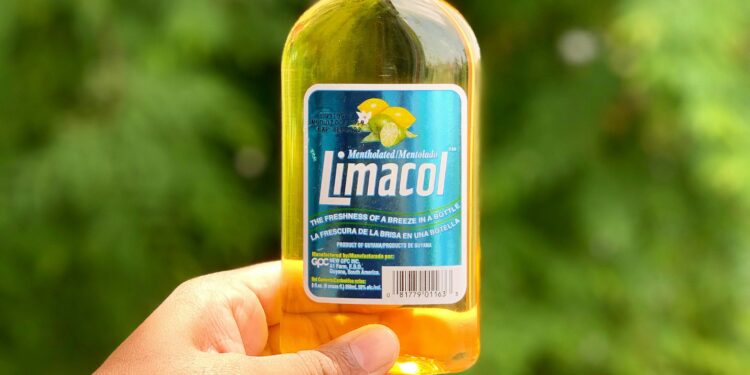Table of Contents
Part 1: The B12 Paradox—My Journey from Expert Confusion to Clarity
For years, I operated on what I thought was sound, progressive advice. As a medical researcher deeply embedded in the world of nutritional science, I championed the “natural is best” ethos that permeates the wellness industry. When clients or colleagues asked for my recommendation on vitamin B12, my answer was swift and confident: “Choose methylcobalamin. It’s the bioactive, natural form. It’s what your body uses.” I would steer them toward expensive, elegantly packaged sublingual sprays and dissolvable tablets, dismissing the older, synthetic cyanocobalamin as an inferior relic.
Then came the failure that forced me to question everything.
A dedicated vegan client, a woman in her late 40s who was meticulous about her health, came to me for guidance. Following my advice to the letter, she invested in a premium, sublingual methylcobalamin spray from a boutique brand. She used it religiously. Three months later, we ran her bloodwork. I expected to see a triumphant validation of my expertise. Instead, the results were a professional gut-punch. Her homocysteine level, a sensitive marker of B12 status, was still alarmingly high. The “best” supplement, the one I had so confidently prescribed, had failed her.
That failure haunted me. It wasn’t just about a single data point; it was about the crumbling of a foundational belief. I had followed the popular narrative, the one plastered across health blogs and promoted by wellness influencers, and it had led to a demonstrably poor outcome. The market was a sea of confusing claims: “bioactive,” “more absorbable,” “natural.” I realized that in advising my client, I had been navigating by marketing slogans, not by a truly rigorous, evidence-based framework. The painful truth was that I didn’t have a reliable system for choosing a supplement—and if I didn’t, how could anyone else?
My search for a better way led me to an unlikely place: a textbook on civil engineering. I was reading about the concept of a “Factor of Safety”—the non-negotiable principle that a bridge, a dam, or a skyscraper must be designed and built to withstand loads far greater than it will ever likely face. Engineers don’t just build for the expected; they build for the unexpected. They prioritize the integrity of the foundation and the quality of the materials above all else. The paint color is irrelevant if the steel beams are flawed.
It was an epiphany. Choosing a supplement is like building a house. The mission is not to have the trendiest “paint color” (like the methylcobalamin form) but to guarantee the structural integrity of the foundation. The absolute, non-negotiable mission of a supplement is the guaranteed, verified delivery of a stable dose.
This insight led me to develop a new paradigm, a model that flips the conventional approach on its head. I call it the B12 Supplement Selection Pyramid. It’s a three-tiered framework that forces us to prioritize what truly matters, moving from the foundational, non-negotiable elements at the base to the finer, personalized details at the peak. This pyramid isn’t just a guide; it’s a logical system for cutting through the noise and making a confident, scientifically sound decision. It’s the blueprint I wish I’d had for my client, and it’s the one I now use to navigate the complex world of nutritional supplements.
Part 2: The Pyramid Base: Foundational Integrity (The Non-Negotiables)
Before you ever compare brands, forms, or prices, you must establish the foundation. These are the two questions that must be answered with absolute certainty. If a supplement fails at this level, nothing else matters.
Step 1: Confirming the Need—Are You a Candidate for B12?
Vitamin B12, or cobalamin, is not a mere “energy booster”; it is a fundamental component of human physiology. It acts as a critical cofactor for enzymes involved in the synthesis of DNA, the formation of red blood cells, and the production of myelin, the protective sheath that insulates our nerve cells.1 An untreated deficiency doesn’t just cause fatigue; it can lead to a cascade of serious and sometimes irreversible conditions, including megaloblastic anemia (where the body produces abnormally large, immature red blood cells), severe neurological damage, muscle weakness, and profound mood disturbances.2
While overt deficiency is considered uncommon in the general U.S. population, this broad statistic masks a critical reality: the risk is highly concentrated and significant within specific, large subgroups.2 Many people who experience symptoms like persistent fatigue or brain fog might attribute them to “just getting older” or stress, when they could, in fact, be signs of a correctable B12 deficiency. It is crucial to assess whether you fall into one of these high-risk categories:
- Diet-Based Risk: Vegans and strict vegetarians are at the highest risk because vitamin B12 is found almost exclusively in animal products like meat, fish, eggs, and dairy.2 Plant foods do not naturally contain B12, making supplementation or consumption of fortified foods essential.6
- Age-Related Risk: Adults over the age of 50 are particularly susceptible. As we age, the stomach’s production of hydrochloric acid often declines, which impairs the body’s ability to cleave B12 from the proteins in food, a necessary first step for absorption.7 For this reason, official recommendations state that adults over 50 should get the majority of their B12 from fortified foods or supplements, where the B12 is not protein-bound and is easier to absorb.9
- Medical Conditions: A range of health issues can dramatically interfere with B12 absorption.
- Pernicious Anemia: A rare autoimmune condition where the body attacks the stomach cells that produce “intrinsic factor,” a protein essential for B12 absorption in the intestine.3
- Digestive Disorders: Conditions like Crohn’s disease, celiac disease, and gastritis (inflammation of the stomach lining) can damage the digestive tract and prevent the body from properly absorbing B12.3
- Surgical History: Individuals who have undergone gastric surgeries, such as gastric bypass for weight loss or removal of parts of the stomach or intestine, have a reduced capacity to produce intrinsic factor and absorb B12.1
- Medication-Induced Risk: Long-term use of certain common medications can interfere with B12 absorption. This includes metformin, a widely prescribed drug for type 2 diabetes, and proton pump inhibitors (PPIs) used to reduce stomach acid.11
- Genetic Factors: Rare genetic disorders, such as transcobalamin II deficiency, impair the transport of B12 within the body.4 More common genetic variants, like those in the MTHFR gene, can affect B12 metabolism and increase needs.12
If you fall into one or more of these categories, B12 supplementation is not just a wellness trend; it is a critical component of preventative health.
Step 2: Verifying Reality—Why Third-Party Certification is the Most Important Decision You’ll Make
Here we arrive at the absolute bedrock of the pyramid and the core lesson from my engineering analogy: you must verify the quality of your materials. In the United States, the Food and Drug Administration (FDA) regulates dietary supplements under the category of food, not drugs. This means that unlike pharmaceuticals, supplements do not require pre-market approval for safety, purity, or efficacy.13
This regulatory gap creates a “buyer beware” market where the quality of products can vary dramatically. Studies have found supplements that contain significantly less of the active ingredient than claimed, while others are tainted with harmful contaminants or unlisted ingredients.15 This is where independent, third-party certification becomes your most powerful tool. Organizations like the
U.S. Pharmacopeia (USP) and NSF International provide the rigorous, independent oversight that the law does not mandate.16 Their seals are not marketing fluff; they are a guarantee of quality backed by a scientific process.
The true power of these top-tier certifications lies not just in a one-time test but in their commitment to ongoing surveillance. Both USP and NSF conduct annual audits of manufacturing facilities and, crucially, perform random off-the-shelf testing of products already in the marketplace.15 This system prevents a manufacturer from producing one high-quality batch to earn a certification and then cutting corners on subsequent production runs. It ensures that the bottle you buy today meets the same exacting standard as the one tested a year ago. This is the “Factor of Safety” in action—a system designed to guarantee reliability and protect you from the inconsistencies of an under-regulated industry. Making a USP or NSF seal your non-negotiable first filter is the single most important decision you can make.
| Feature | USP Verified | NSF Certified / NSF Certified for Sport |
| Verifies Identity & Potency? | Yes. Confirms the product contains the ingredients on the label in the declared amount and strength.15 | Yes. Certifies that what’s on the label is in the bottle.17 |
| Verifies Purity (Contaminants)? | Yes. Ensures the product does not contain harmful levels of contaminants like heavy metals, microbes, or pesticides.15 | Yes. Ensures the product contains no undeclared ingredients or unacceptable levels of contaminants.17 |
| Verifies Manufacturing Practices (GMP)? | Yes. Audits the facility for compliance with FDA Good Manufacturing Practices (GMPs).16 | Yes. Includes facility audits to ensure compliance with GMPs.13 |
| Verifies Performance (Dissolution)? | Yes. Tests that the tablet or capsule will break down and release its ingredients within a specified time for absorption.15 | Not explicitly listed as a primary component of the general certification, but part of overall quality assurance. |
| Includes Banned Substance Testing? | Not part of the standard USP Verified program. | Yes, for the NSF Certified for Sport® program, which screens for over 280 substances banned by major athletic organizations.13 |
| Ongoing Surveillance? | Yes. Conducts annual audits and off-the-shelf testing of verified products.15 | Yes. Conducts annual audits and periodic retesting to ensure continued compliance.17 |
Part 3: The Pyramid Mid-Tier: The Right Architecture for You (Personalized Choices)
Once you have established a pool of products with verified foundational quality (i.e., they bear a USP or NSF seal), you can move up the pyramid to personalize your choice. This is where you select the right architecture—the specific form and delivery method—that best suits your individual body and circumstances.
The Great Debate Re-Framed: Cyanocobalamin vs. Methylcobalamin
This is the “paint color” of the house—the debate that dominates marketing but is often a distraction from more important factors. The simplistic “natural (methylcobalamin) vs. synthetic (cyanocobalamin)” narrative is deeply misleading. The truth is far more nuanced.
- The Case for Cyanocobalamin (CNCbl): This synthetic form is created by binding a cobalamin molecule to a cyanide molecule. While “cyanide” sounds alarming, the amount is physiologically insignificant and poses no safety risk.19 The primary advantages of cyanocobalamin are its exceptional
stability and low cost.20 Its stability makes it the preferred choice for fortifying foods and for use in multivitamins, where it needs to coexist with other ingredients without degrading. It has been used for decades and is extensively studied, with a long track record of effectively and safely correcting B12 deficiency.20 In fact, a 2021 study involving vegans found that cyanocobalamin was
more effective than methylcobalamin at maintaining healthy serum B12 levels.22 - The Case for Methylcobalamin (MeCbl): This is a “bioidentical” form, meaning it’s one of the forms naturally found in the body and in food sources.19 It is bound to a methyl group. The marketing claim is that because it’s already in an “active” form, the body can use it more readily. Some research supports this, suggesting that methylcobalamin may have higher tissue retention and that less is excreted through urine compared to cyanocobalamin.19
However, the biochemical reality challenges the marketing hype. Upon absorption, the body cleaves the methyl group from supplemental methylcobalamin and must re-methylate it endogenously to form the active coenzyme it needs.20 The idea that you are getting a “pre-methylated” shortcut is, for most healthy individuals, biochemically inaccurate. The National Institutes of Health has stated that existing evidence suggests no significant differences between the forms of B12 with respect to absorption or bioavailability.20
For the vast majority of people, the “Cyano vs. Methyl” debate is a red herring. It’s a marketing construct that pushes consumers toward more expensive products without a clear, evidence-backed benefit. For a healthy individual, a verified dose of stable, affordable cyanocobalamin is an excellent and scientifically sound choice.
The choice only becomes a critical variable in one specific context: the MTHFR gene mutation. The MTHFR gene provides instructions for an enzyme that is a cornerstone of the body’s methylation cycle—a process vital for converting folate and B vitamins into their active forms.23 An individual with a significant MTHFR mutation may have a compromised ability to perform these conversions. In this specific case, providing the already methylated form (methylcobalamin) can theoretically help bypass this impaired pathway, making it a more logical and potentially more effective choice.12
| Your Profile | Primary Recommendation | Rationale |
| General Health/Prevention | Cyanocobalamin | Proven effective, highly stable, and cost-efficient. The most evidence-backed choice for general use.20 |
| Budget-Conscious | Cyanocobalamin | Offers the best value without sacrificing efficacy, as it is significantly less expensive than methylcobalamin.21 |
| Known MTHFR Mutation | Methylcobalamin | Logically preferred to bypass a potentially compromised methylation pathway. Consult with your healthcare provider.12 |
| Seeking Maximum Stability (e.g., in a multivitamin) | Cyanocobalamin | Its superior stability ensures it remains potent over the product’s shelf life, especially when combined with other nutrients.20 |
Matching Delivery to Your Body: Pills, Sublinguals, and Sprays
The next architectural choice is the delivery method. This isn’t about which is “best” in a vacuum, but which pathway into your body is the most reliable for you.
- Oral Pills/Tablets: This is the standard and most-studied method. Absorption in the gut occurs via two main pathways. First is the active, high-efficiency pathway that uses intrinsic factor, but this system becomes saturated at a very small dose (around 1.5-2 mcg).9 Second is the passive diffusion pathway, where about 1% of a very large dose is absorbed directly through the intestinal wall. This is why high-dose oral tablets (e.g., 1000 mcg) are proven to be effective at correcting deficiency, even in people who lack intrinsic factor (pernicious anemia), as they successfully leverage this passive diffusion route.9
- Sublinguals (Drops/Sprays): These liquid forms are designed to be held under the tongue and absorbed directly into the bloodstream through the rich network of capillaries in the mucous membranes.27 The theory is that this bypasses the complexities and potential pitfalls of the digestive system.25 This makes it an attractive option for anyone with known or suspected absorption issues, such as those with gastritis, celiac disease, or a history of gastric surgery.27 Sprays may offer a slight advantage over droppers in terms of more precise and consistent dosing.27
While the theory behind sublinguals is sound, the clinical evidence shows that all methods can be effective. Some studies have found no significant difference in efficacy between oral and sublingual supplements for resolving a deficiency.25 Another retrospective analysis even found that sublingual B12 improved serum levels more than intramuscular injections.26
This leads to a crucial realization: the choice of delivery method is primarily a risk-mitigation strategy. For a person with a healthy, functioning digestive system, a standard oral pill is perfectly effective, more economical, and backed by the most extensive research. The premium for sublinguals or sprays is often an unnecessary expense. However, for an individual with a known or suspected absorption issue—be it from aging, disease, or surgery—the sublingual route provides a valuable alternative pathway. It de-risks the supplement’s journey into the bloodstream by avoiding a compromised system. The choice, therefore, should be based on a calculated assessment of your personal digestive health.
Part 4: The Pyramid Peak: Fine-Tuning for Success (Dosage & Consistency)
At the peak of the pyramid, with a verified, well-chosen supplement in hand, the final step is to ensure you are taking the right amount, consistently.
Decoding Doses: From Daily Needs to Deficiency Correction
One of the most confusing aspects of B12 is the enormous gap between the Recommended Dietary Allowance (RDA) and the doses found in supplements. The RDA for adults is just 2.4 micrograms (mcg) per day.29 Yet, supplements commonly contain 500 mcg, 1000 mcg, or even 5000 mcg.
This disparity is entirely due to the body’s inefficient absorption. Of a 500 mcg supplement, the body may only absorb about 10 mcg, or 2%.25 The high doses are necessary to ensure a sufficient amount makes it into the bloodstream via passive diffusion. Fortunately, B12 is a water-soluble vitamin. The body absorbs what it needs, and any excess is safely passed through the urine.2 For this reason, no Tolerable Upper Intake Level (UL) has been established, and even very high doses (e.g., 2000 mcg) are considered safe for treating deficiency.29
The key is not to fixate on a single number but to adopt a dosage strategy tailored to your specific needs and lifestyle.
| Population / Goal | Daily Dose Recommendation | Alternative Weekly Dose | Rationale & Key Citations |
| General Adult (Prevention) | 10-25 mcg | N/A | A small daily dose is sufficient to bridge any minor dietary gaps and maintain healthy levels in a low-risk individual.6 |
| Vegan / Vegetarian (Maintenance) | At least 10 mcg | At least 2000 mcg, once per week | Vegans can choose a small daily dose or a large weekly dose. The weekly dose is convenient, cost-effective, and works by saturating the passive diffusion pathway.6 |
| Adult Over 50 (Maintenance) | 500-1000 mcg | 1000 mcg, twice per week | Higher doses are recommended to overcome age-related malabsorption of food-bound B12 and optimize status.8 |
| Pregnant / Lactating | 2.6 mcg / 2.8 mcg (RDA) | N/A | Needs are slightly elevated. B12 is typically included in prenatal vitamins. Consult your doctor for specific dosage.29 |
| Correcting Diagnosed Deficiency | 1000-2000 mcg | N/A | High therapeutic doses are used to rapidly restore depleted body stores. This should be done under medical supervision.31 |
The Overlooked Factor: Consistency is King
The most perfectly selected, third-party verified, and appropriately dosed supplement is utterly useless if it stays in the bottle. The final, and perhaps most important, component of success is adherence. Whether you choose a daily pill or a weekly spray, building it into your routine is the step that translates a sound strategy into a tangible health benefit.
Part 5: Conclusion: Your B12 Blueprint—From Confused Consumer to Confident Expert
The journey that began with my own professional failure ultimately led to a framework of clarity. The B12 Supplement Selection Pyramid provides a logical, evidence-based path through a marketplace of confusion. It forces us to prioritize what matters: first, the foundational guarantee of quality; second, the architectural choices that fit our unique biology; and finally, the fine-tuning of dosage for optimal results.
This framework has proven its worth. I think of another client, a man in his 50s suffering from debilitating peripheral neuropathy—tingling and numbness in his feet. His bloodwork revealed a known MTHFR mutation. Applying the pyramid, our path was clear.
- Foundation: We selected a brand with a USP Verified seal. Non-negotiable.
- Architecture: Given his MTHFR status, we chose methylcobalamin to support his compromised methylation pathway. To be safe and bypass any potential gut issues, we opted for a sublingual form.
- Peak: We initiated a therapeutic daily dose of 1000 mcg to correct his deficiency.
Within six months, his neuropathy symptoms had dramatically improved. His follow-up labs showed his homocysteine levels had normalized. It was a powerful validation not of a “magic” supplement, but of a rational, systematic process.
You now have this process. You can move from being a confused consumer, swayed by marketing claims, to a confident expert on your own health journey. Your blueprint is simple:
- Assess Your Need: Review the high-risk categories. Are you a candidate? Consult your doctor and consider getting tested.
- Hunt for the Seal: Make a USP or NSF seal your non-negotiable first filter. No seal, no deal.
- Choose Your Form: Default to cost-effective, stable cyanocobalamin unless you have a specific, medically-advised reason (like a known MTHFR mutation) to choose methylcobalamin.
- Select Your Delivery: Stick with economical oral pills unless you have a known or suspected gut absorption issue that makes a sublingual form a wiser, risk-mitigating choice.
- Set Your Dose: Use the dosage table to determine the right strategy for your needs, whether it’s a small daily amount or a large weekly one.
- Be Consistent: Build the habit that makes the strategy work.
By following this blueprint, you are no longer guessing. You are making an informed, empowered decision based on the best available science, tailored specifically to you.
Works cited
- Vitamin B12 Deficiency – StatPearls – NCBI Bookshelf, accessed on August 12, 2025, https://www.ncbi.nlm.nih.gov/books/NBK441923/
- Vitamin B-12 – Mayo Clinic, accessed on August 12, 2025, https://www.mayoclinic.org/drugs-supplements-vitamin-b12/art-20363663
- Vitamin deficiency anemia – Symptoms & causes – Mayo Clinic, accessed on August 12, 2025, https://www.mayoclinic.org/diseases-conditions/vitamin-deficiency-anemia/symptoms-causes/syc-20355025
- Vitamin B12 Deficiency: Symptoms, Causes & Treatment – Cleveland Clinic, accessed on August 12, 2025, https://my.clevelandclinic.org/health/diseases/22831-vitamin-b12-deficiency
- Vegan B12 Supplements – What you Need to Know from Dietitians, accessed on August 12, 2025, https://plantbasedrds.com/blog/vegan-b12-supplements/
- What Every Vegan Should Know About Vitamin B12 – The Vegan …, accessed on August 12, 2025, https://www.vegansociety.com/resources/nutrition-and-health/nutrients/vitamin-b12/what-every-vegan-should-know-about-vitamin-b12
- What to Know About Vitamin B12 Dosage for Older Adults – WebMD, accessed on August 12, 2025, https://www.webmd.com/healthy-aging/what-to-know-about-vitamin-b12-dosage-for-older-adults
- B12 Status of Older Vegetarians – Vegan Health, accessed on August 12, 2025, https://veganhealth.org/vitamin-b12/b12-status-of-older-vegetarians/
- Vitamin B12 | Linus Pauling Institute | Oregon State University, accessed on August 12, 2025, https://lpi.oregonstate.edu/mic/vitamins/vitamin-B12
- Rationale for VeganHealth’s B12 Recommendations – Vegan Health, accessed on August 12, 2025, https://veganhealth.org/vitamin-b12/explanation-of-vitamin-b12-recommendations/
- Vitamin B-12 injections for weight loss: Do they work? – Mayo Clinic, accessed on August 12, 2025, https://www.mayoclinic.org/healthy-lifestyle/weight-loss/expert-answers/vitamin-b12-injections/faq-20058145
- Causes of B12 deficiency and how its related to MTHFR?, accessed on August 12, 2025, https://advancedfunctionalmedicine.com.au/b12-deficiency-and-mthfr/
- What You Should Know About Third-Party Certified Supplements – Momentous, accessed on August 12, 2025, https://www.livemomentous.com/blogs/all/third-party-certified-supplements
- About Us | Quality Supplements, accessed on August 12, 2025, https://www.quality-supplements.org/about-us
- Why USP Verified Matters – Quality Supplements, accessed on August 12, 2025, https://www.quality-supplements.org/why-usp-verified-matters
- USP’s Dietary Supplement Verification Program, accessed on August 12, 2025, https://www.usp.org/verification-services/dietary-supplements-verification-program
- Dietary Supplement and Vitamin Certification | NSF, accessed on August 12, 2025, https://www.nsf.org/consumer-resources/articles/supplement-vitamin-certification
- Dietary Supplement Manufacturing – USP Verified Mark, accessed on August 12, 2025, https://www.usp.org/verification-services/verified-mark
- Comparative Bioavailability and Utilization of Particular Forms of …, accessed on August 12, 2025, https://pmc.ncbi.nlm.nih.gov/articles/PMC5312744/
- Which Vitamin B12 to choose? Cyanocobalamin vs Methylcobalamin… – argalys, accessed on August 12, 2025, https://www.argalys.com/en/blogs/advices/which-form-of-vitamin-b12-to-choose-cyano-vs-methyl-adeno
- Methylcobalamin vs Cyanocobalamin: Choosing a B12 Supplement – Verywell Health, accessed on August 12, 2025, https://www.verywellhealth.com/methylcobalamin-vs-cyanocobalamin-8423403
- Efficacy of supplementation with methylcobalamin and cyancobalamin in maintaining the level of serum holotranscobalamin in a group of plant-based diet (vegan) adults – PMC, accessed on August 12, 2025, https://pmc.ncbi.nlm.nih.gov/articles/PMC8311243/
- MTHFR What!? — Hopewell Family Care, accessed on August 12, 2025, https://hopewellfamilycare.com/articles/2017/1/13/mthfr-what
- MTHFR Gene Variant and Folic Acid Facts – CDC, accessed on August 12, 2025, https://www.cdc.gov/folic-acid/data-research/mthfr/index.html
- Sublingual Vitamin B12: Is Taking Supplements under Your Tongue More Effective? | Ro, accessed on August 12, 2025, https://ro.co/supplements/sublingual-b12/
- Efficacy of different routes of vitamin B12 supplementation for the treatment of patients with vitamin B12 deficiency: A systematic review and network meta-analysis, accessed on August 12, 2025, https://pmc.ncbi.nlm.nih.gov/articles/PMC11128391/
- Vitamin B12 Drops and Sprays – B12-Vitamin.com, accessed on August 12, 2025, https://www.b12-vitamin.com/drops-sprays/
- Why is B12 Difficult to Absorb and Do Oral B12 Sprays Work? – News-Medical.net, accessed on August 12, 2025, https://www.news-medical.net/health/Why-is-B12-Difficult-to-Absorb-and-Do-Oral-B12-Sprays-Work.aspx
- Vitamin B12 • The Nutrition Source, accessed on August 12, 2025, https://nutritionsource.hsph.harvard.edu/vitamin-b12/
- Vitamin B12 Dosage: How Much Should You Take per Day? – Healthline, accessed on August 12, 2025, https://www.healthline.com/nutrition/vitamin-b12-dosage
- How Much Vitamin B12 Is Too Much? – Healthline, accessed on August 12, 2025, https://www.healthline.com/nutrition/too-much-vitamin-b12






